Sony Alpha a100 Digital SLR Review
Sony Alpha a100 Digital SLR
Sony plans to dominate the DSLR market and if this launch model is anything to go by it may just succeed.
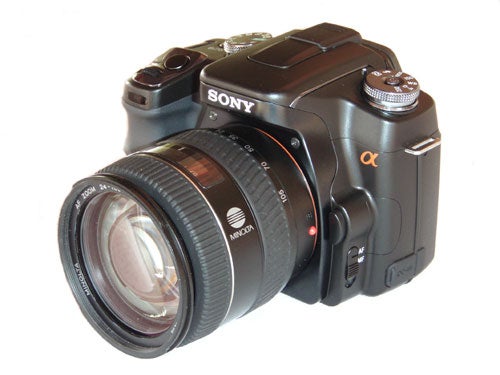
Verdict
Key Specifications
- Review Price: £599.00
The announcement at the start of this year that Konica Minolta was pulling out of the camera business altogether came as a huge shock to most people in the camera industry and photographic press. Minolta has a pedigree dating back to 1873 and was one of the “Big 5” camera companies, with a long history of innovation and excellence.
As well as its popular range of digital compacts, it was also a major player in the digital SLR market, with the Dynax 5D and 7D meeting wide critical acclaim. The accompanying statement that all of the company’s digital SLR technology was being transferred to Sony was greeted with some scepticism among those who discuss such things, but in fact Sony and Konica Minolta had been working on a joint digital SLR project since July last year, so the news wasn’t all that surprising.

Well, the fruits of that collaboration have now been revealed, in the shape of the Sony Alpha α100, the company’s first digital SLR. I was lucky enough to be invited to Marrakech in Morocco for the official European launch event, and spent a couple of days in the desert learning about the camera and trying it out with some of the range of lenses available for it. While not quite my usual review template, it is based on handling a full production camera.
The basic details are certainly encouraging. The Alpha α100 uses the same Sony 10 megapixel APS sensor found in the Nikon D200, and also uses the Minolta lens mount, giving it instant access to Konica Minolta’s 10 per cent share of the digital camera market and a ready supply of very high quality lenses.
Further optical excellence is provided thanks to Sony’s partnership with the legendary Carl Zeiss company, the German firm that practically invented optical engineering. The camera is being launched with a range of over twenty lenses bearing the Alpha brand, as well as a couple of flashguns, a range of attractive bags and cases, and other useful accessories.
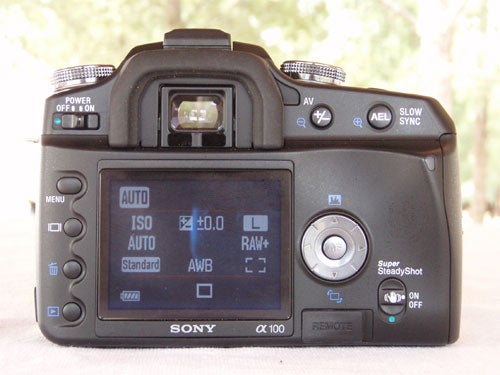
In overall styling the Alpha α100 resembles, not surprisingly, the Konica Minolta 5D, however it is far from being merely a re-badged Minolta. In order to be taken seriously in the highly competitive DSLR field, Sony has had to come up with something unique and special, and in my opinion it has succeeded admirably. The α100 is crammed full of advanced technology designed to make taking good pictures easier, addressing most of the major problems that can ruin your pictures.
To combat camera shake it features an improved version of Konica Minolta’s already excellent moving-sensor Anti Shake system, which is now renamed Super SteadyShot and offers 3.5 stops of extra low-speed hand-held shooting – more than any competing system.
Dust on the sensor is the bane of digital SLRs, since it causes picture-ruining black marks on every frame. The α100 has a two-fold defence against this. Its CCD sensor has an antistatic coating, so dust is less likely to stick to it, and it also uses the anti-shake system’s actuators to vibrate the CCD every time the camera is switched on or the lens is changed, thus dislodging all but the most persistent particles. While not offering100 per cent protection, this does at least go a long way towards alleviating this problem.
The old digital bugbear of limited dynamic range is also addressed, with the inclusion of the Dynamic Range Optimiser, a system within the camera’s newly developed Bionz image processor that is capable of evaluating and adjusting the exposure of different parts of the image separately, so in theory it should always achieve a perfect tonal range between the brightest highlight and darkest shadow, without losing detail in either.
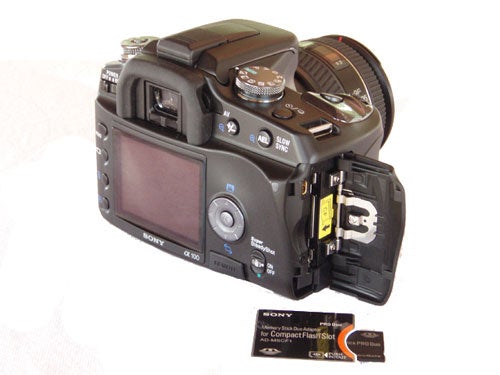
The funny thing is, all of these systems have been seen before. Olympus E-System SLRs have a vibrating CCD anti-dust system, HP has used an evaluative gain-adjustment system on several of its compacts to improve dynamic range, and of course the CCD-shift anti-shake system has previously appeared on a number of Konica Minolta compacts and SLRs. The α100 takes these ideas, improves upon them and adds them all together in one camera.
However there’s a lot more to a good camera than just a bunch of clever electronics. Handling, performance and picture quality are equally important, and far more subjective. This is where real hand-s on experience with the camera counts, and although I only used the camera for a day’s shooting, that was enough to form a good opinion of it.
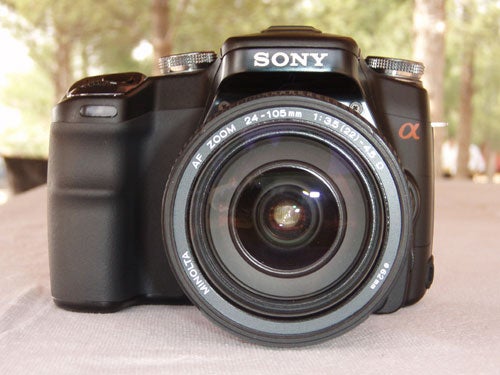
Thanks to its Dynax pedigree, overall handling is exceptionally good. The camera weighs 545g body only, or around 630g when fully loaded, which is considerably lighter than any of its main rivals but still solid enough to provide a stable shooting platform. The large rubberised handgrip is very comfortable, and the eyepiece is large and bright, with a large soft rubber surround that I was able to use easily despite wearing my sunglasses.
I did find that the shutter was rather noisy, with the reflex mirror making a loud clack with every shot, however it was explained to me that if the mirror was damped to make it quieter it would transfer vibration to the body which would interfere with the anti-shake system. Surely there would be some way to counteract this?
One interesting point: the α100 takes CompactFlash cards, and is the first Sony camera that doesn’t have a slot for the company’s expensive Memory Stick cards. However it does come with a CF-Memory Stick Duo adaptor, so existing Sony camera owners can at least still use their old cards.
The control layout is extremely well thought out and I found it very intuitive to use, which is important because like all serious DSLRs the α100 is a complex beast, with an extensive range of manual options and adjustments.
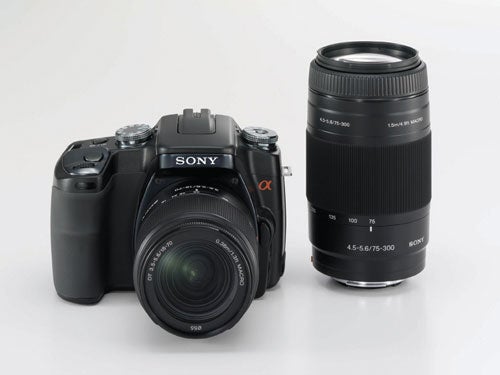
On the top panel are two large control dials. The left-hand one controls all of the main systems, including metering mode, flash mode, focusing mode, white balance and the two modes for the Dynamic Range Optimiser system. You simply turn the dial to the appropriate notch, press the function button in the centre of the dial and then adjust the setting using the data wheel positioned just in front of the shutter button. Quick and simple.
The α100 doesn’t have a separate LCD display for camera data, but all the information you need is displayed on the monitor screen.
On the right-hand dial you’ll find the usual five exposure modes (auto, program, shutter/aperture priority, manual) as well as six program modes; portrait, landscape, close-up, action, beach/snow and night scene. This gives it a wide enough range of manual and automatic options to satisfy both the experienced photographer and the relative newcomer.
Other frequently-used options are also controlled by external buttons, including self timer, continuous shooting, exposure compensation and exposure lock. The only time I needed to go into the menus was to format the memory card.
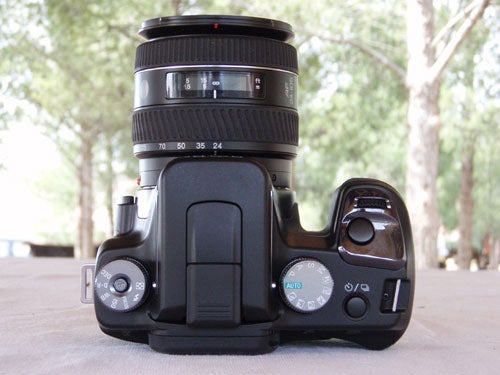
Taking photos in the harsh desert sun is a challenge for any metering system, but the α100 coped with the conditions admirably. The autofocus and exposure system proved to be extremely quick and precise, certainly the equal of any of the camera’s main market rivals, and the Dynamic Range Optimiser was a revelation. At midday everything was either eye-searingly bright or deep black shadows, but the system never missed a trick, capturing detail in both shadows and highlights. Even when I accidentally over-exposed a few shots when experimenting with the manual exposure settings, the processing system managed to retain detail in what should have been badly burned-out areas.
The DRO system has two settings, one which just optimises the picture at shooting to get a good tonal range, and the other more complex setting which analyses the whole photo and adjusts it zone by zone. This produces even better results, but does add about two seconds to the processing time for each shot. However even using this mode I was impressed by the shooting speed. In standard mode (i.e. with the DRO turned off) the α100 can shoot at a continuous three frames a second, and the big 1700mAh InfoLithium battery is good for at least 750 shots on a single charge, although I was told privately that the actual figure is over 1,000 shots, which is extremely impressive.
As for the anti-dust system, I changed lenses several times while shooting in a very dusty environment, but I haven’t seen any dust spots on any of the shots that I took, so I’d have to say that it appears to work.
As you will hopefully see from the attached sample shots, in the crucial area of image quality the α100 produces first class results. These shots were taken using the RAW+JPEG mode, and what I’ve posted here are the JPEG files from those pairs. At the time of writing I haven’t yet received the RAW converter software, so I can’t say yet what the converted files are like, but the JPEGs produced by the Bionz processor are simply stunning, with rich vibrant colours and plenty of pin-sharp detail, without the over-processed look that I had expected from the DRO system. The JPEG files are around 3MB each, which is quite heavily compressed, however I wasn’t able to detect any compression artefacts. RAW files are around 8-10MB each.

Image noise is very well controlled at 100-400 ISO, although it does become something of a problem at 800 and 1600. However this is fairly standard performance for a camera in this class and certainly not a real problem.
The main rival for this camera is going to be the Canon EOS 30D, and in my opinion (and that of other reviewers that I spoke with) the α100 produced consistently better results despite the very challenging conditions. I’ve got a Nikon D200 coming in for review next week, so it’ll be interesting to see how that stacks up, since the two cameras use the same CCD, but I’d say that the Nikon is going to have to go some to beat it.
The big news however is the price. Sony is launching the Alpha α100 at an RRP of just £599 body only, £699 with an 18-70mm zoom lens, or £849 in a two-lens kit. Since these are launch prices you can guarantee that the actual retail price will be a good deal cheaper within a matter of weeks.
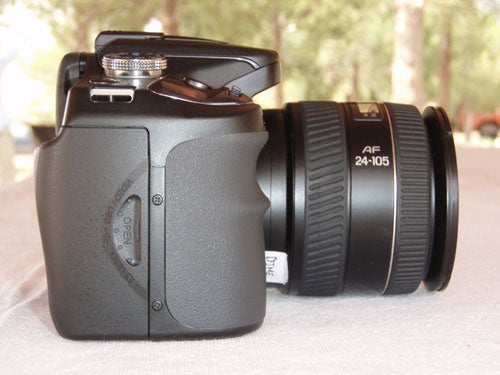
Sony has stated that within two years it wants to be challenging Nikon for the number two slot in the digital SLR market, and to be making inroads into Canon’s dominating 50 per cent share. If the company can maintain the commitment to quality and innovation that the α100 demonstrates, and to do it at those kind of prices, then it just might succeed. If I were Nikon, I’d be having an urgent board meeting right about now.
”’Verdict”’
An extremely impressive debut from a new player in the digital SLR market, the Sony Alpha α100 is pitched at the consumer end of the market, but is actually a better camera than most of its mid-range rivals too. It bristles with clever technology, but is very easy to use and produces consistently excellent results. It would be a good camera for a newcomer to SLRs, but more experienced users will also find it very satisfying to use.
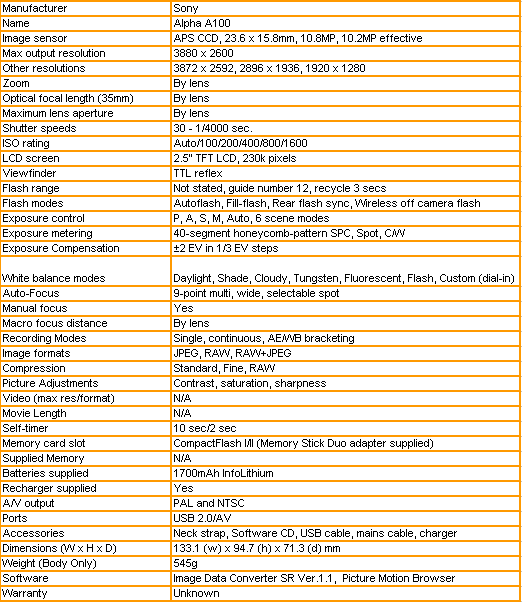
A range of test shots are shown over the next three pages. Here, the full size image has been reduced for bandwidth purposes, and a crop taken from the original full resolution image has been placed below it in order for you to gain an appreciation of the overall quality. The following pages consist of resized images so that you can evaluate the overall exposure. For those with a dial-up connection, please be patient while the pages download.
—-
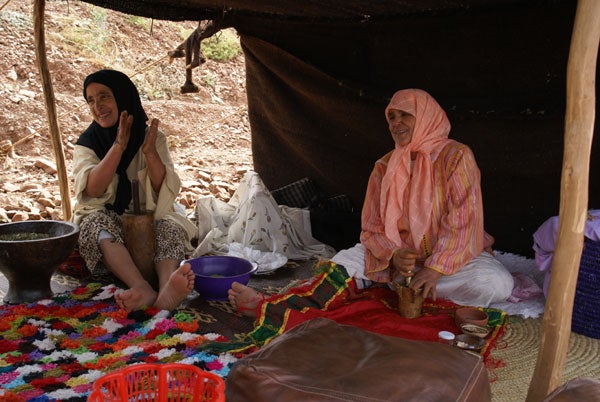
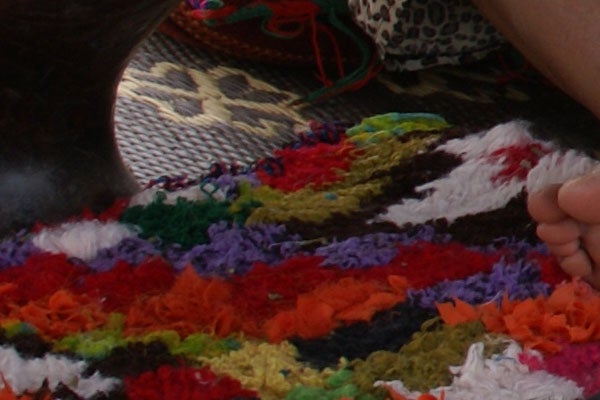
1/100th sec, f6.3, ISO 100
These two old Berber women seem pretty happy. I’m not sure what she’s mixing up in that mortar, but I’ll have a tenners worth.
—-
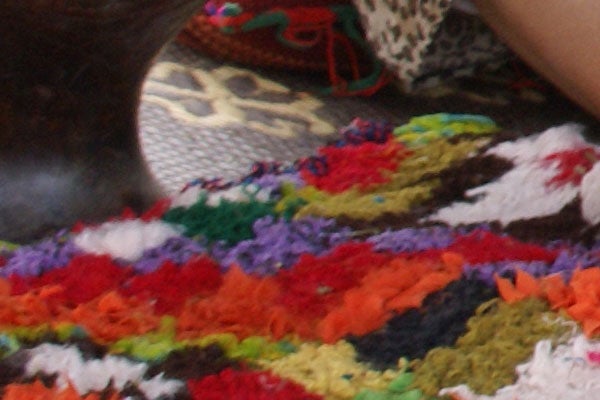
1/125th sec, f6.3, ISO 200
A slight shift in the metering has made this shot a lot lighter, but it is still just as smooth as the 100 ISO shot.
—-
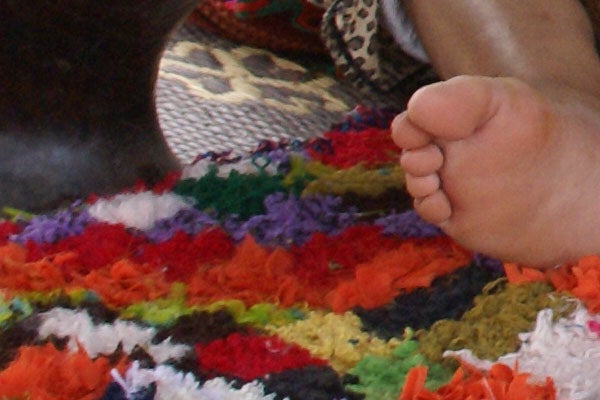
1/160th sec, f7.1, ISO 400
At 400 ISO some colour speckling is starting to appear in the darker areas, but the overall colour rendition is still very good.
—-
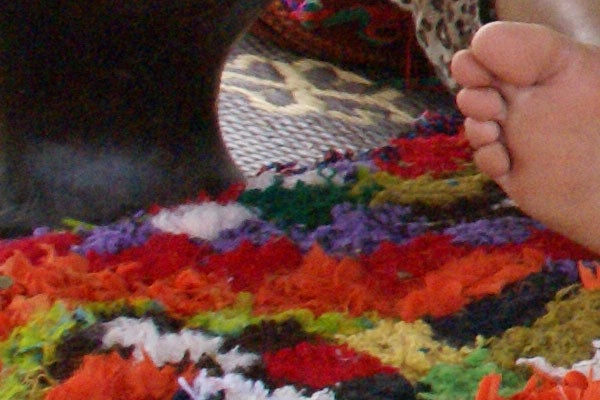
1/250th sec, f8.0, ISO 800
At 800 ISO there is quite a bit of noise across the whole image, and a lot of speckling in the darker areas. Some contrast has been lost.
—-
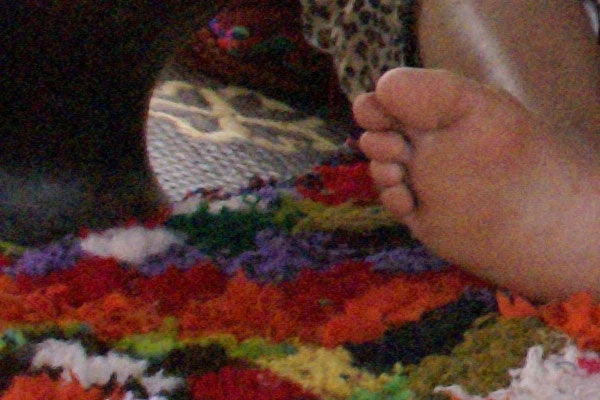
1/640th sec, f8.0, ISO 1600
At 1600 ISO the image is quite noisy despite the very fast shutter speed. It’s no worse than most of its rivals though.
—-
This page consists of resized images so that you can evaluate the overall exposure.
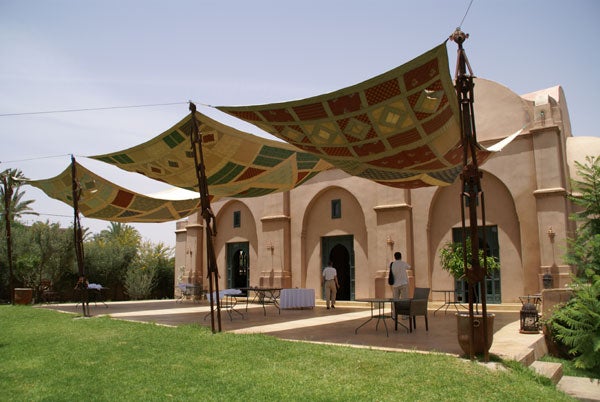
This was taken using an 18-200mm lens, which was a bit slow and noisy, and has a little chromatic aberration towards the corners.
—-
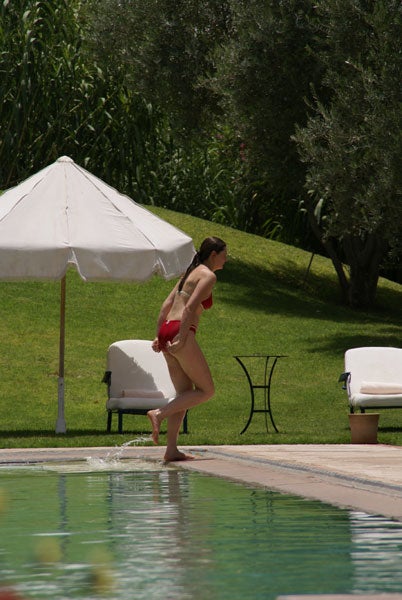
The A100 has a sensor that automatically focuses and sets the exposure as soon as the camera is raised to the eye, perfect for spur-of-the-moment shots.
—-

The A100’s colour rendition is simply superb, and responds well to the old slide photography trick of underexposing by half a stop to increase saturation.
—-
This page consists of resized images so that you can evaluate the overall exposure.

Despite the intensely bright sunlight, the Dynamic Range Optimiser system produces a nicely balanced shot with good shade and highlight detail. I think that’s a Golden Eagle, but I could be wrong (looks like a falcon to me – ed.).
—-
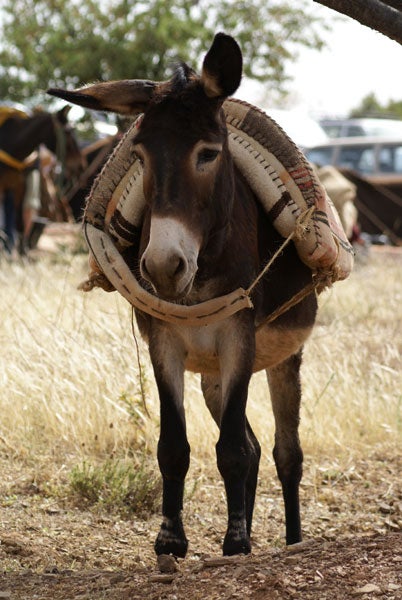
Somehow donkeys always seem to look depressed, even though this one was well-fed and looked after. I blame Eeyore.
—-
This page consists of resized images so that you can evaluate the overall exposure.
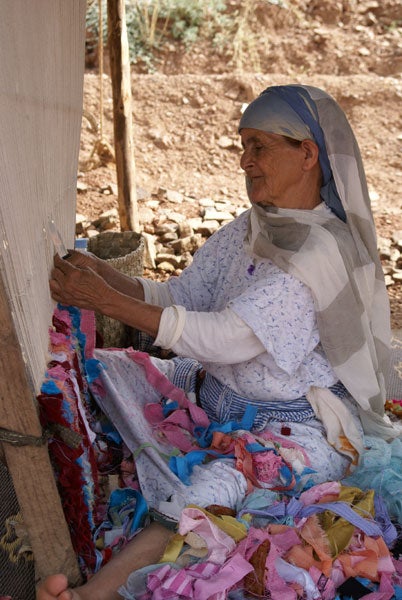
The A100’s colour rendition is very naturalistic, even in the deep shade of this Berber goat-wool tent.
—-

This old boy was very busy making something that involved lots of sticks and string. I watched him for about 20 minutes, but I have no idea what it was supposed to be. Awesome detail though.
—-
This page consists of resized images so that you can evaluate the overall exposure.

This was taken using a 100-400mm telephoto zoom, and shows plenty of detail despite the haze of dust in the air.
—-
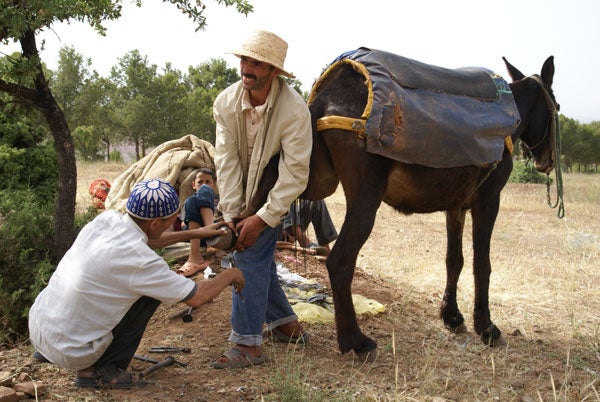
The noisy shutter mechanism makes it difficult to take inconspicuous candid shots, but these guys were just posing for the camera anyway.
—-
Trusted Score
Score in detail
-
Value 9
-
Image Quality 10
Features
| Camera type | Digital SLR |
| Megapixels (Megapixel) | 10.2 Megapixel |
| Optical Zoom (Times) | By lensx |

